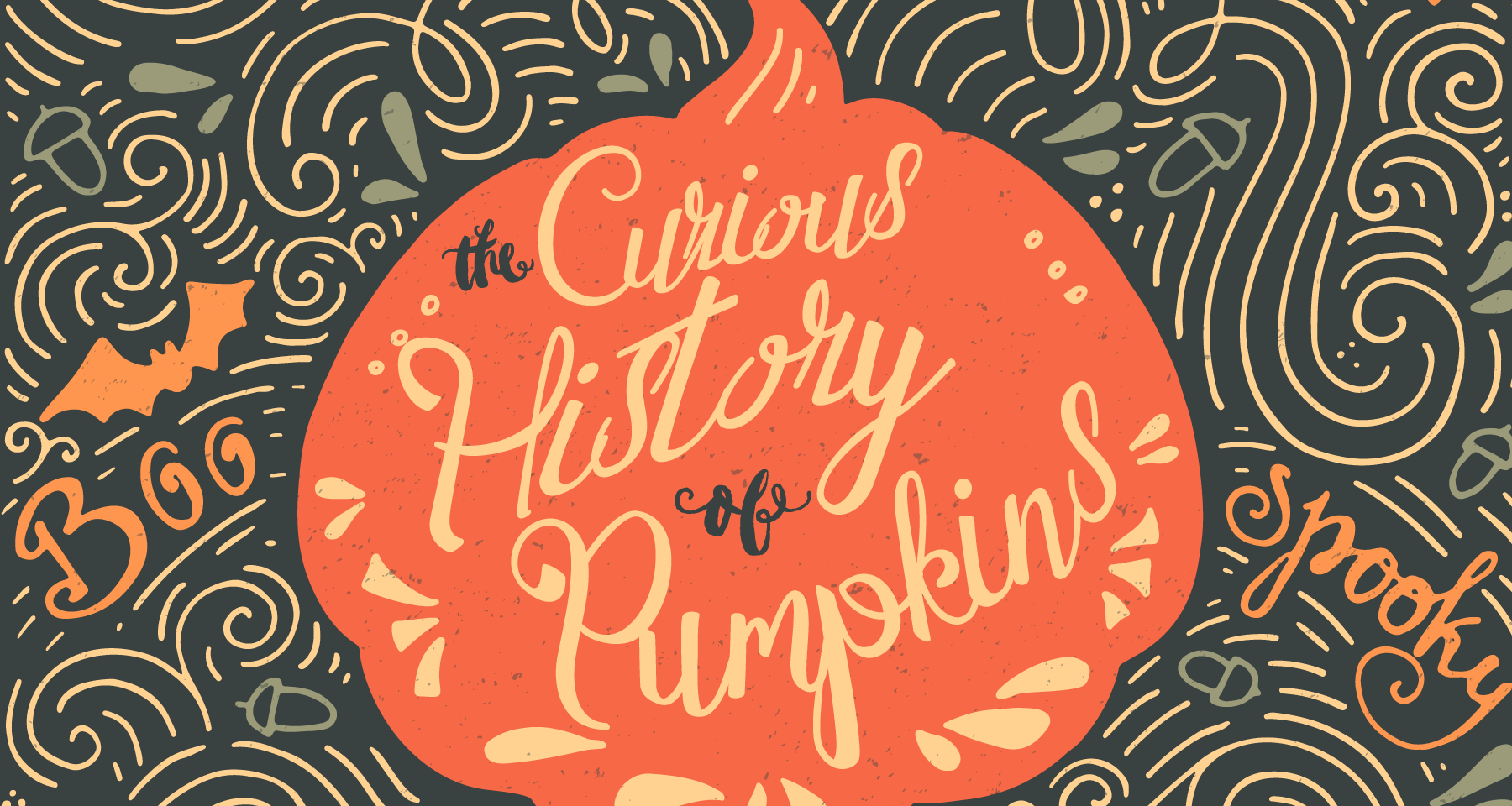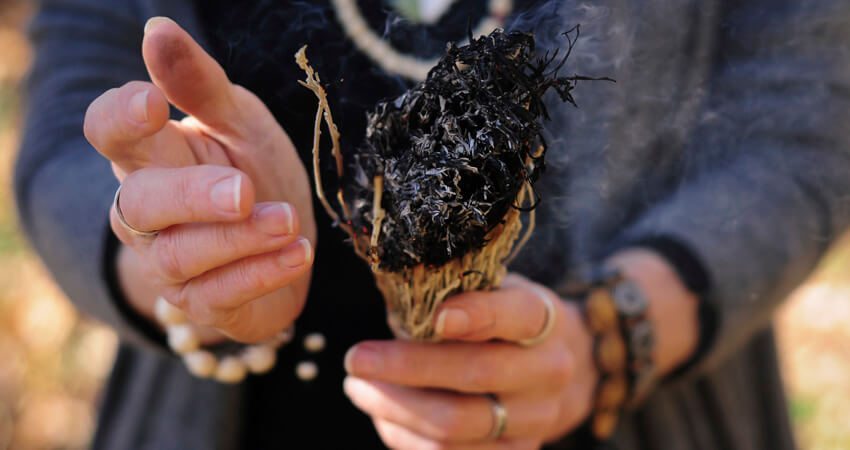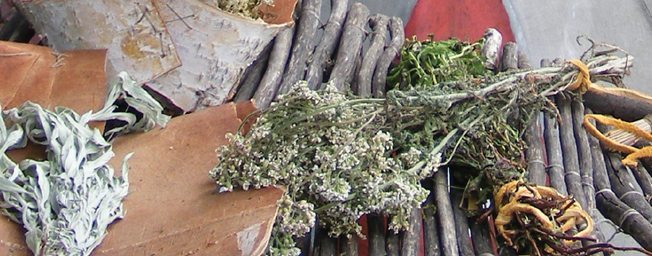
The Cree Healer Series, Part 1
Categories: Health & Healing Indigenous Cultures & Anthropology Literature & the Arts
Guest Post by David Young, Robert Rogers, and Russell Willier
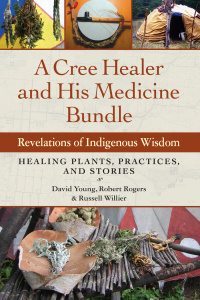 In our June release, A Cree Healer and his Medicine Bundle, medicine man Russell Willier, anthropologist David Young, and ethnobotanist Robert Rogers offer readers entrée into the sacred world of the Cree healing arts. In an attempt to preserve Native wisdom before it’s too late, they are making this information accessible to the public for the first time. NAB’s latest blog series explores the challenges all three faced in researching, writing, and publishing the book, from tackling logistical issues to making the case to Native elders that the time was right to share this knowledge. Below, the authors give some background on how they came to form a team.
In our June release, A Cree Healer and his Medicine Bundle, medicine man Russell Willier, anthropologist David Young, and ethnobotanist Robert Rogers offer readers entrée into the sacred world of the Cree healing arts. In an attempt to preserve Native wisdom before it’s too late, they are making this information accessible to the public for the first time. NAB’s latest blog series explores the challenges all three faced in researching, writing, and publishing the book, from tackling logistical issues to making the case to Native elders that the time was right to share this knowledge. Below, the authors give some background on how they came to form a team.
How the Authors Met
David Young and Robert Rogers met when David, who was teaching anthropology at the University of Alberta, visited Robert’s clinic in the early 1980s to see if there were some alternative to his increasingly frequent use of a “puffer” to alleviate asthma-like symptoms. Robert prescribed a strict diet for a month, accompanied by several supplements. By the end of his treatment, David no longer needed his puffer and promptly threw it away.
Over the years, David and Robert became friends, with Robert occasionally visiting David’s courses—such as Health and Healing and Medical Anthropology—at the University of Alberta to give guest lectures. During one of Robert’s lectures on his experiences with Eduardo, a Peruvian shaman, his future wife was sitting in the classroom, and he’s forever grateful for that synchronicity. At present, both Robert and David are on the Board of Directors of the Centre for Health and Culture at the University of Alberta (currently under the leadership of Dr. Earle Waugh), begun by David in 1984.
David met Russell Willier in 1984 when he was doing a video documentary on Russell’s traditional skin tanning methods (brain tanning) on the Sucker Creek Reserve in northern Alberta. In the course of working with Russell on this project, David learned that Russell is a healer, or shaman. He immediately asked Russell if it would be possible to document his healing practices. Although he knew it would be controversial, Russell agreed, based on the belief that it was time for non-natives to learn about how powerful Native medicine can be. The result was The Psoriasis Research Project, in which ten non-native patients were treated for psoriasis. Psoriasis was chosen because it’s easy to see changes in this skin condition.
[slideshow_deploy id=’32287′]
This research resulted in the book Cry of the Eagle: Encounters with a Cree Healer, by David and two of his graduate students, Lise Swartz and Grant Ingram. The book, published in 1989 by the University of Toronto Press, specifically did not document Russell’s herbal repertoire or how it was used, as this would have been totally unacceptable at the time due to myriad issues that we’ll address later—documenting Russell’s beliefs and healing rituals proved to be controversial enough. Our new book, A Cree Healer and his Medicine Bundle, is the sequel to Cry of the Eagle: Encounters with a Cree Healer in that it reveals information about Russell’s herbal medicines that couldn’t be published 25 years ago. (More information about how times have changed will be provided in our next post.)
David and Russell have maintained their friendship since 1984 and are pleased that A Cree Healer and his Medicine Bundle can finally be published. One of its strengths is that David and Russell were joined by Robert, who has provided detailed information in the book on the properties of the plants in Russell’s herbal repertoire that help account for the efficacy of these plants.
Russell and Robert first met at Sucker Creek First Nation in the mid-1970s. Robert was living on Hippy Hill, between Driftpile and Joussard on the south shore of Lesser Slave Lake in northern Alberta. He had built a log cabin, planted gardens, wildcrafted medicinal plants, and learned a number of wilderness skills. Russell had just begun to practice his medicine ways, and Robert was interested in aboriginal uses of local plants. He also spent time with another Cree healer in the area, Rose Auger, from Driftpile. Over the years, Russell and Robert would find themselves speaking at the same conferences and ceremonies in the area.
In the next post, the authors discuss the delicate and difficult process of garnering support from the Native community to make sacred knowledge available to the public for the first time.
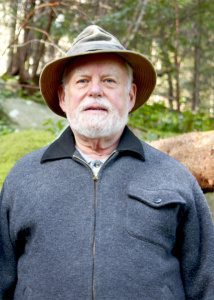
ABOUT DAVID YOUNG
David Earl Young spent much of his childhood in Sierra Leone, West Africa. After returning to the U.S., he graduated with a BA in sociology and philosophy from the University of Indianapolis, followed by a BD in religion and anthropology from Yale University, an MA in Asian Studies from the University of Hawaii, and a PhD in anthropology from Stanford University. Dr. Young taught anthropology for many years at the University of Alberta in Canada before retiring to take a teaching position at Kansai Gaidai University in Japan. He has conducted fieldwork in Mexico, Japan, China, and northern Canada. Dr. Young and his wife are retired and living on the island of Gabriola, off the west coast of Canada.
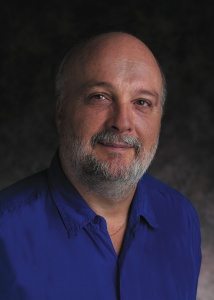
ABOUT ROBERT ROGERS
Robert Dale Rogers, BSc, RH/AHG, FICN, has been a student of native plants and fungi from the Canadian prairies for more than forty years. He is a retired clinical herbalist, amateur mycologist, and professional member of the American Herbalist Guild. Rogers is an assistant clinical professor in family medicine at the University of Alberta. His over 20 books and ebooks may be found here. They involve the traditional use of plants and fungi of the boreal forest with special attention to application by aboriginal healers. Rogers teaches plant medicine at Grant MacEwan University and the Northern Star College of Mystical Studies in Edmonton. He is a consultant to the herbal, mycological, and nutraceutical industries, is currently chair of the medicinal mushroom committee of the North American Mycological Association, and is on the editorial board of the International Journal of Medicinal Mushrooms. Rogers lives in Edmonton, Canada with his wife, Laurie. You can visit their website here.
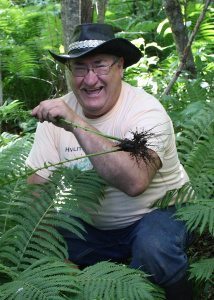
Tags: Herbalism Shamanism David Earl Young Robert Dale Rogers Russell Willer Robert RogersABOUT RUSSELL WILLIER
Russell Willier was born on the Sucker Creek Reserve in northern Alberta. He grew up in a large family of twelve brothers and sisters. His father was a skilled hunter and trapper who passed his knowledge about the traditional Woods Cree way of life on to his son. Willier attended Catholic mission school but quit in order to help his parents on the family farm. Even at an early age, Russell showed signs of having been selected by the Spirit World to be a healer, but he resisted for many years. Eventually, he accepted this responsibility and received the medicine bundle of his great grandfather, Moostoos, a well-known healer in the area and signer of Treaty 8. By the time Willier received his medicine bundle, the knowledge of how to use the little plant packets inside it had been lost, so Russell showed them to elders and asked if they knew how these “combinations” were used. Gradually, over many years, Russell pieced together the information he needed to begin practice as a Medicine Man. Willier, who still lives on the Sucker Creek Reserve, travels extensively to treat those who call upon him for help.


